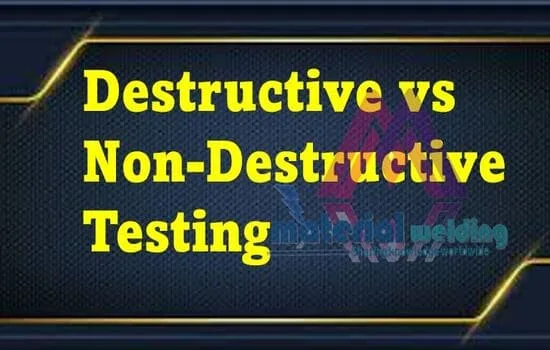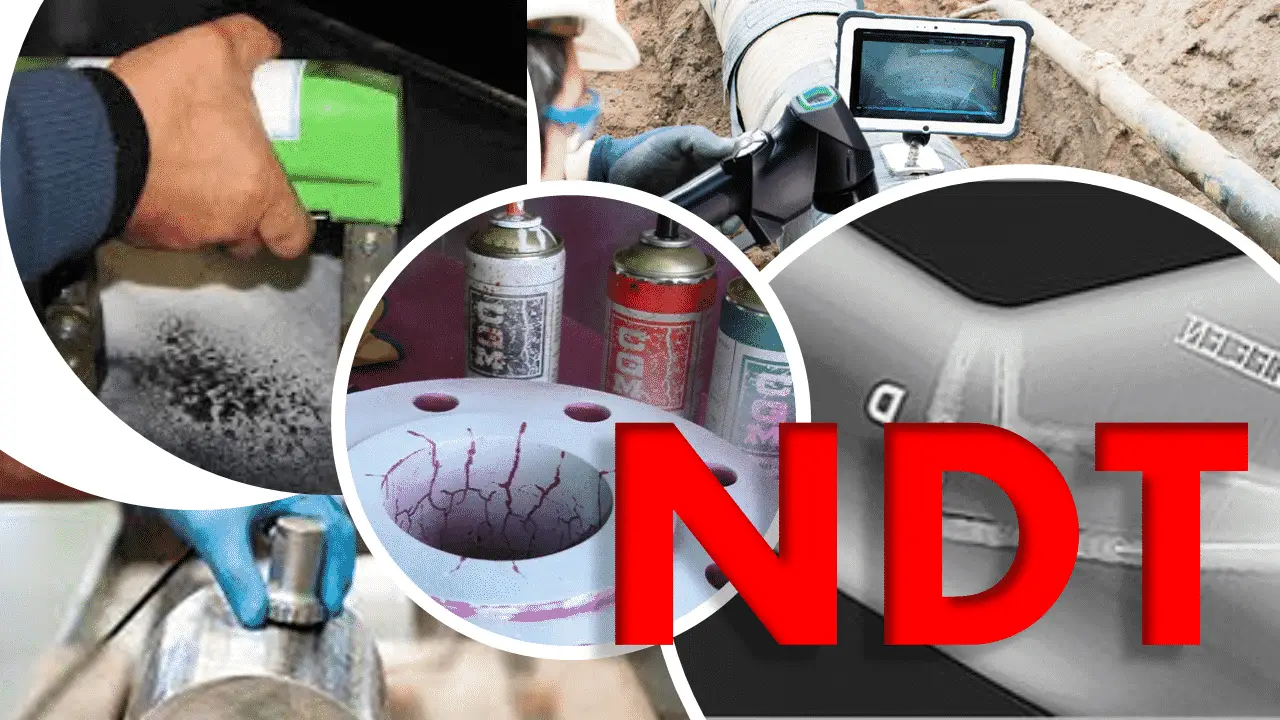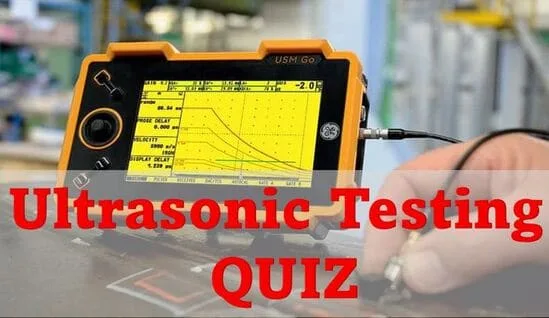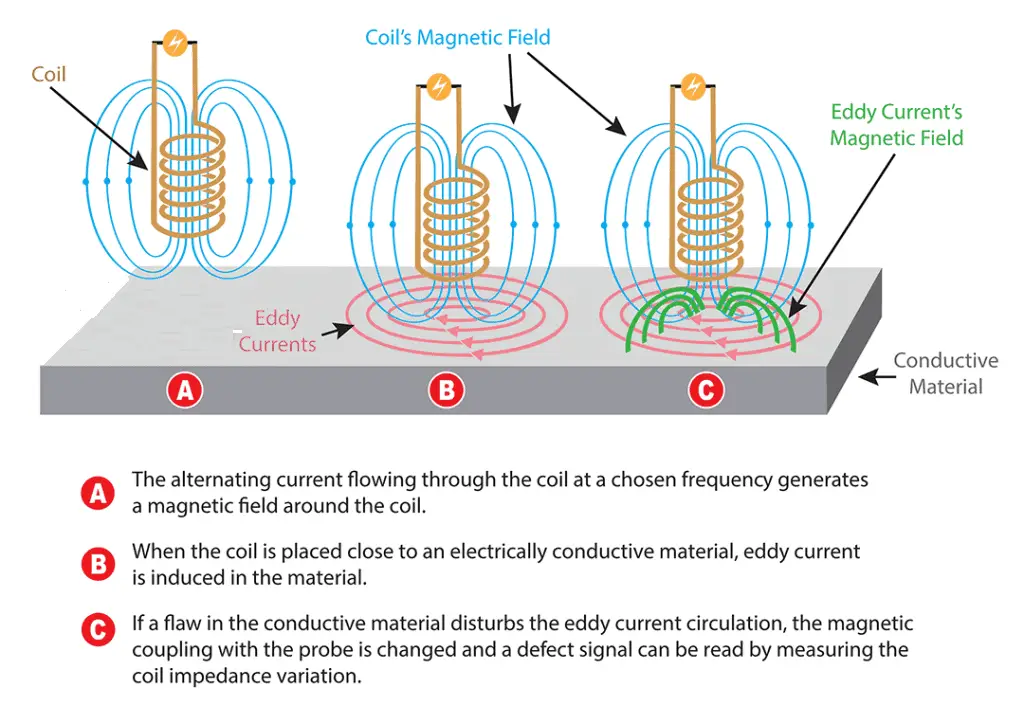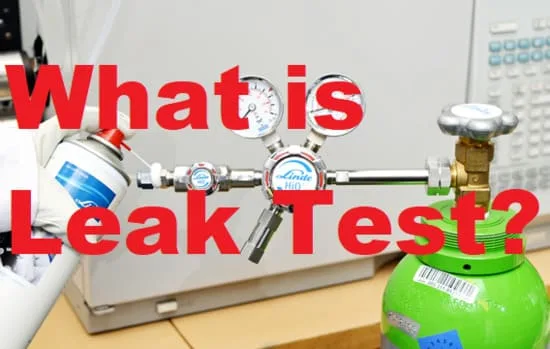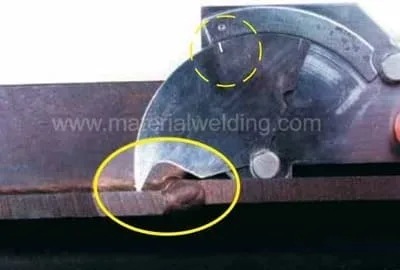Nondestructive testing (NDT Testing)
Nondestructive testing (NDT) or also called NDT Testing is a type of testing that is used on materials or products to identify any defects without causing any damage to the object being tested. There are many different types of NDT, but the most common are:
- Visual Inspection (VT),
- Ultrasound Testing (UT),
- Magnetic Particle Inspection (MPI),
- Radiographic Testing (RT),
- Penetrant Testing (PT),
- Eddy Current Testing (ECT).
One of the main advantages of NDT testing is that it can be used to test a wide variety of materials, including both solid and liquid objects.
It can also be used on a wide range of products, from large structural components to small electronic parts. Additionally, NDT is often faster and less expensive than other methods of testing, such as destructive testing.
However, there are some limitations to NDT. For example, some types of NDT may not be suitable for use on certain types of materials or products. Some require strict control of ambient temperature & conditions for an effective result.
What is Nondestructive Testing Inspection?
Nondestructive Testing or Non-Destructive Inspection is an important part of quality control in manufacturing. It is used to detect and identify flaws in materials and products without causing damage.
There are many different types of Non-Destructive Testing, each with its own advantages. Some of the most common methods are visual inspection, magnetic particle inspection, ultrasonic testing, and radiographic inspection as highlighted earlier.
As per the ASNT SNT-TC 1A NDT level III certification following the main Nondestructive Testing methods:
- Radiography Testing (RT)
- Neutron radiography (NR)
- Ultrasonic testing (UT)
- Eddy current and flux leakage testing (ECT/ MFL)
- Liquid penetrant testing (LPT)
- Magnetic particle testing (MPI)
- Leak testing (LT)
- Acoustic emission testing (AET)
- Visual testing (VT)
- Thermal/Infrared Testing
There are many reasons why NDI is important. For one, it can help companies save money by catching defects before they become costly problems.
NDI can also improve safety by identifying potential hazards before they cause an accident. And finally, NDI can help companies comply with safety and quality regulations.
Types of NDI include visual inspection, ultrasound inspection, radiography, and magnetic particle inspection. Each type has its own advantages and disadvantages. For example, visual inspection is cheap and easy to use, but it can only detect surface defects.
What is Nondestructive Testing Examination?
A Non-Destructive Testing or Non-Destructive Examination is a critical part of quality assurance for many industries.
The types of nondestructive testing examinations can be visual examination, magnetic particle inspection, penetrant inspection, and eddy current testing.
These tests are used to detect surface and subsurface discontinuities in a component or material without causing any damage.
The advantages of using nondestructive testing examinations are that they can help find problems before they become failures, they can help improve product reliability, and they can help reduce manufacturing costs.
Nondestructive testing examinations are an important part of quality assurance for many industries.
Who is NDT Tester?
NDT Tester is a professional who tests the integrity of materials and products using non-destructive methods. They work in a variety of industries, including aerospace, automotive, construction, and manufacturing.
The job of an NDT Tester is to ensure that materials and products are safe for use and meet all quality standards. Some of the tools and methods that NDT Testers use include ultrasonics, radiography, eddy current testing, and magnetic particle testing.
These techniques can be used to find and fix defects in these materials and components. The main aim of an NDT technician is to ensure that these materials and components are safe for use.
The role of an NDT Tester is important because it helps to ensure the safety of the public. It is also a vital role in quality control for manufacturers because it helps to identify any defects in products before they are released to the market.
NDT Testers typically have a college degree in engineering or physics, although there are some positions that require only on-the-job training.
The role of an NDT Tester/ Technician can be very diverse. They may be required to work on a wide range of products, from aircraft parts to oil pipelines.
They may also be required to work in a number of different environments, including factories, construction sites, and laboratories.
One of the main responsibilities of an NDT technician is to identify any defects in materials or components.
This may involve using x-rays, ultrasound, or magnetic testing techniques. Once defects have been identified, the technician must then decide on the best course of action to take.
Non Destructive Testing Training
NDT is an essential tool for many industries, including manufacturing, construction, and engineering.
It can be used to inspect everything from small components to large structures. There is three level of Qualification for NDT as per ASNT:
- NDT Level I
- NDT Level II
- NDT Level III
In the USA, the qualification is as per the ASNT SNT-TC-1A by ASNT while in Canada, the NDT Tester qualifications are controlled by NRCAN. In the UK, the qualification body is BiNDT.
There are many different types of NDT, but some of the most common include visual inspection, ultrasound testing, radiography, and magnetic particle inspection.
All of these methods require specialized training and certification. That’s why it’s important to find a reputable training provider that offers a comprehensive course curriculum.
Non Destructive Testing Technician Salary
An important part of many industries is the ability to test materials without damaging them. This is where nondestructive testing technicians come in.
They use various methods to test the strength, quality, and safety of materials without causing any damage. The salary for a technician in this field can vary depending on their experience, skills, and location. However, the average salary is around $55,000 per year.
Nondestructive testing technicians often enjoy a number of perks in their job. One of the most common is good benefits packages.
Many companies offer health insurance, dental insurance, and retirement plans. Additionally, technicians typically have good job security and work/life balance. They may also be able to work from home occasionally or take flexible hours.
Non Destructive Testing Jobs
If you’re looking for a job in nondestructive testing (NDT), there are plenty of opportunities in the United States. NDT technicians use various techniques to inspect objects and materials for defects without damaging them.
There are many different types of NDT, so if you’re interested in this field, it’s important to find out which one is right for you.
The most common type of NDT is visual inspection, which involves looking at an object to see if there are any defects.
Other common methods include ultrasound testing, which uses high-frequency sound waves to identify flaws in objects, and magnetic particle testing, which uses magnets to find cracks and other defects in metal objects.
There are many companies that offer NDT training programs, so it’s important to do your research before you choose one.
Non Destructive Testing Schools
There are many NDT schools in the USA. Some of these schools offer nondestructive testing (NDT) training programs that are certified by the American Society for Non-Destructive Testing (ASNT). There are also a few universities that have NDT undergraduate and graduate degree programs.
Non Destructive Testing Techniques
Nondestructive testing (NDT) is a process of inspecting, testing, or evaluating materials, components, or assemblies without causing damage.
There are many different methods of NDT, but they all have the same goal: to find and fix problems before they become a safety hazard or lead to failure.
One common method of NDT is the visual inspection. This involves looking at the item in question and checking for any obvious problems.
Other common methods include ultrasonic testing, which uses sound waves to detect defects; radiographic testing, which uses X-rays to image hidden features; and magnetic particle inspection, which uses magnets to find cracks and other defects.
Each of these methods has its own strengths and weaknesses, and the best method for a specific application depends on the material being tested and the nature of the defect.
Non Destructive Testing Certification
A nondestructive testing (NDT) certificate is an important certification to have if you are looking for a career in the nondestructive testing industry. There are many different types of NDT certificates, so it is important to find the one that is right for you.
The most common type of NDT certificate is the Level I certificate. This certificate indicates that you have basic knowledge of NDT and can use basic techniques.
If you are looking for a more advanced certificate, there are many different options available. ASNT NDT Level III is the highest NDT certification level.
Some certificates allow you to specialize in a certain type of NDT, while others allow you to become certified in multiple types of NDT.
No matter what type of NDT certificate you choose, it is important to make sure that the certification organization is accredited by an independent organization.
Non Destructive Testing for Welding
Welds are an important part of many structures, and it’s important to ensure they are strong and reliable. One way to do this is through nondestructive testing (NDT) of welds.
There are a number of different NDT methods, each with its own strengths and weaknesses. Some common methods include visual inspection, ultrasonic testing, radiographic testing, and magnetic particle testing.
Each of these methods has its own advantages and disadvantages. For example, ultrasonic testing is good for detecting defects in the weldment but can be affected by the presence of foreign objects or sound-absorbing materials.
Radiographic testing is good for detecting discontinuities in the weldment but can be affected by the thickness of the material being tested.
Non-Destructive Testing of Concrete
Concrete is a material that is subjected to a great deal of stress, and it is important to ensure its integrity before it is put into use.
Nondestructive testing (NDT) is a process that can be used to inspect concrete for any potential flaws or damage.
There are several different types of NDT that can be used, including acoustic emission testing, ultrasonic testing, and magnetic particle inspection.
Each type of NDT has its own strengths and weaknesses, and the best way to determine which one is right for a particular application is by considering the specific needs of the project.
For example, acoustic emission testing can be used to detect tiny cracks in concrete, while ultrasonic testing can identify larger flaws and defects. Magnetic particle inspection can be used to detect surface cracks and discontinuities in the concrete.
Similar Posts:
